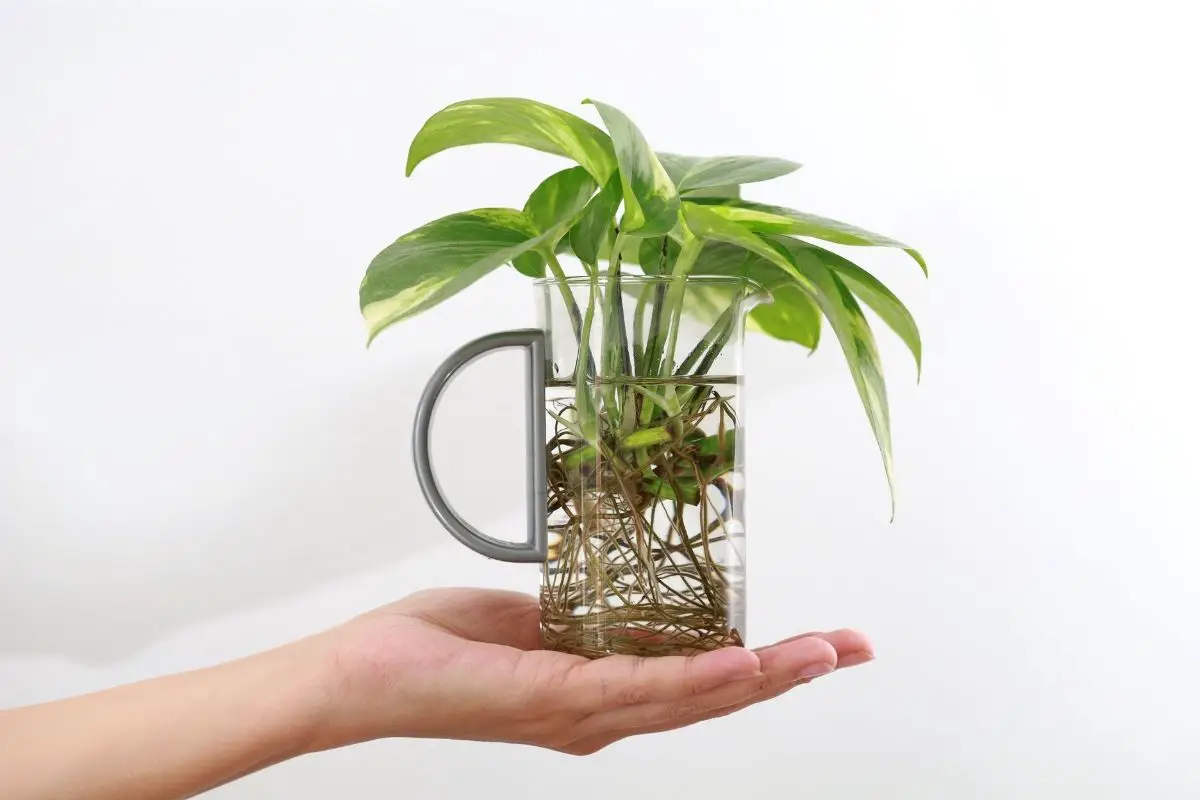
Tomatoes (Solanum lycopersicum, Lycopersicon lycopersicum) grow up to 3 feet long depending on which root system they have. I’ve always planted tomatoes in my garden after turning about one foot or more of the soil over with a pitchfork. I know, I’m pretty old school about that.
I find that the tomato taproots grow deep and develop healthy root systems this way. If you want to plant tomatoes but don’t have room for a garden, you can plant them in containers or raised beds. You just need to make sure you have enough depth for the tomato roots to grow long.
Learn more about how long tomato roots grow and the types of root systems they have. This will help you grow healthy plants and tomatoes.
What Root System Do Tomato Plants Have?
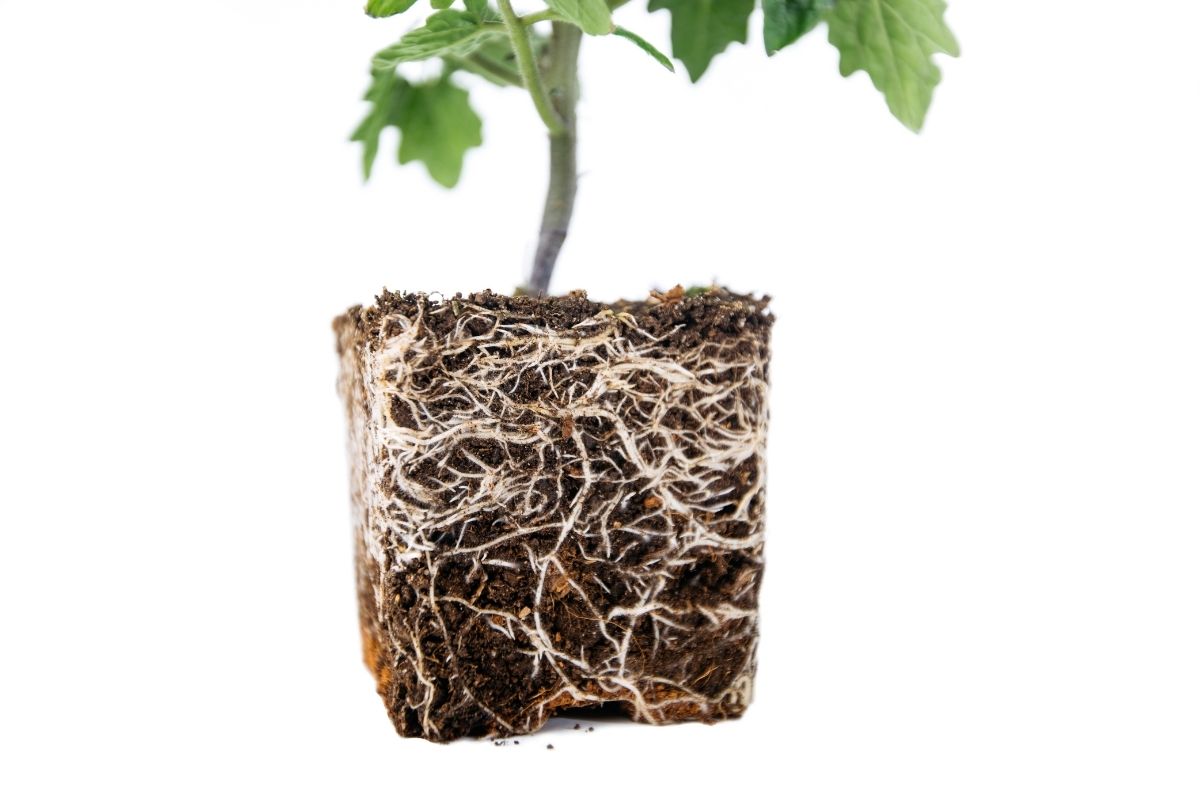
Tomato plants can have two different types of root systems. One is a taproot system and the other is a fibrous root system. It’s important to know the difference if you’re growing tomatoes in your garden, raised beds, or pots.
Whether the tomato plant has a taproot or a fibrous root system depends on how it was germinated. If it grows from a seed, it develops the taproot. Plants that grow from cuttings develop a fibrous root system.
What Are Taproots?
A taproot is a large, central root. It is longer and wider than the lateral roots that grow off of it. Taproots grow deeper into the soil than fibrous roots.
Since they’re so deep, they can hold the weight of large tomato plants.
What Are Fibrous Roots?
Fibrous roots are thin and stringy. They branch out and form a complex web of roots that stay near the topsoil. They look like fuzzy clumps of root hairs.
These fine roots provide nutrients, moisture, and air circulation for your tomato plants. If you notice small bulbs on the ends of the roots, they’re for storing nitrogen.
Why Do Tomato Roots Grow to Different Depths?
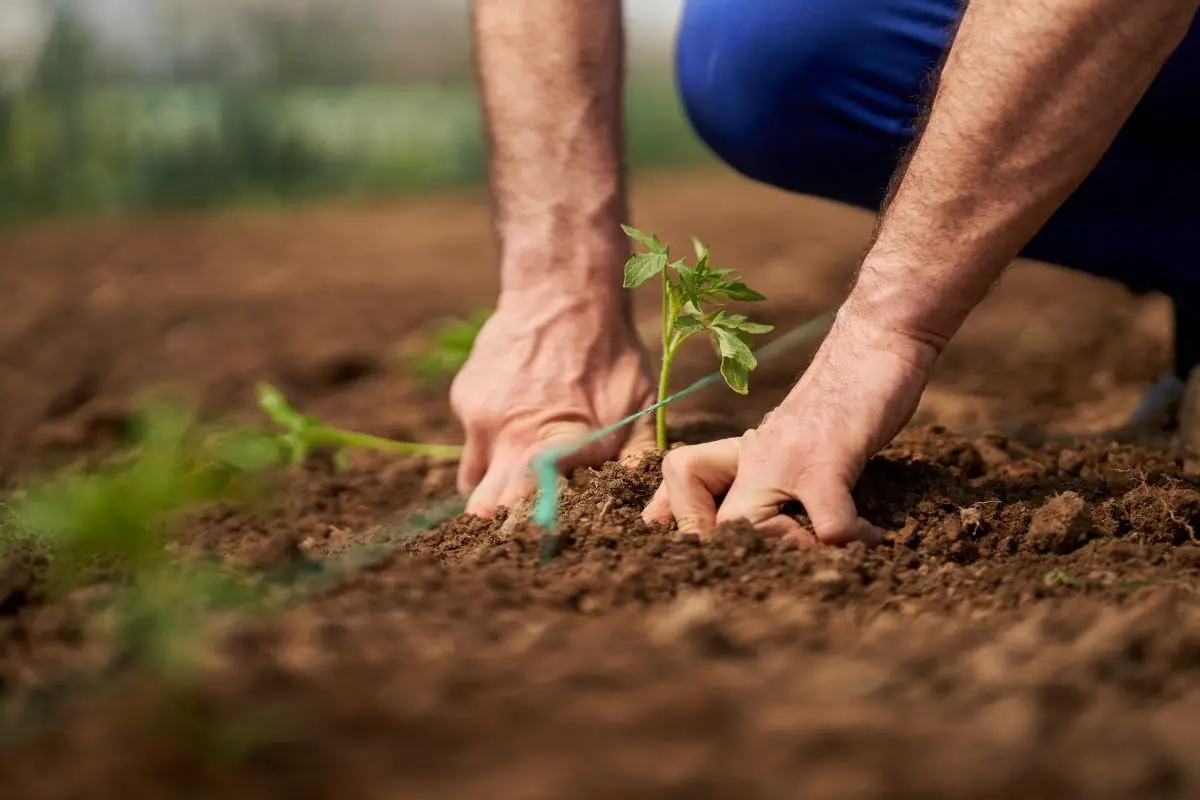
When you plant different tomato varieties, you’ll see that their roots develop differently. Some tomato varieties grow roots deeper than others. Did you know that there are thousands of tomato varieties to choose from?
You want to make sure that you select the best variety for your garden or containers. The tomato variety is one of the factors that determines how deep the roots grow.
More About Tomato Varieties
If you want to have a good chance of growing tomato plants that give you large, mouth-watering tomatoes, it’s important to know the size of the tomato plant, root system, and the type of tomato it produces.
- Determinate – These are compact, bush-like plants. All the blossoms come at once, so the plant doesn’t have a chance to grow too big. This is a popular choice for canning because all the tomatoes ripen at the same time.
- Indeterminate – This variety has a vine growth so you can’t tell how big the tomato plant will grow. They can get up to 12 feet tall and you need to stake or trellis them. Planting in an in-ground garden is best for deep root system development.
- Dwarf – These are similar to the determinate varieties but grow smaller. The tomatoes ripen throughout the season rather than all at once. If you have limited space and want to use containers, dwarf varieties are your best bet.
More About Types of Tomato Fruit
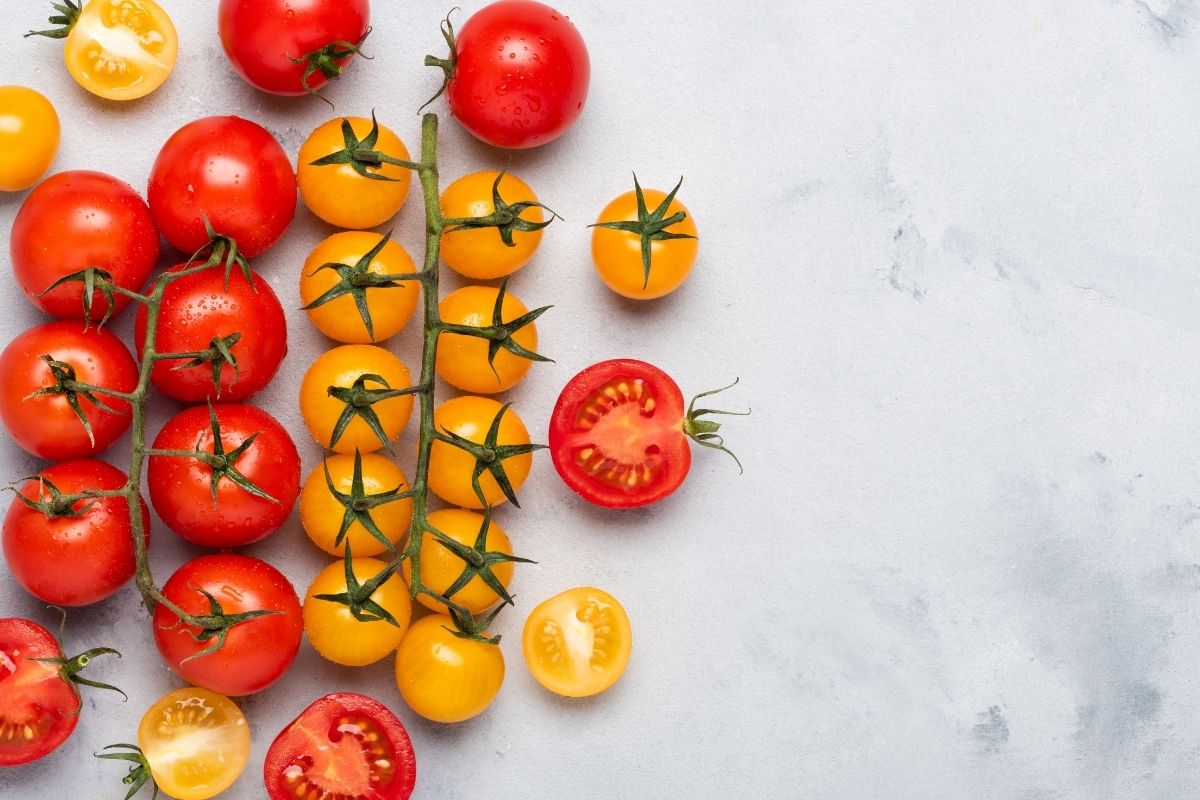
My favorite tomato plant varieties are the ones that produce large, juicy tomatoes. I use these for making canned tomatoes and eating right off the vine. What do you want to do with your tomatoes?
Maybe you want small tomatoes for your salad or popping into your mouth, or you prefer ones with fewer seeds. Whatever you like, there’s a variety for your needs.
- Cherry – These popular, little tomatoes are easy to grow in containers or gardens. The tomato plant produces small, flavorful fruit that’s bursting with flavor.
- Large fruit – Because of their large size, these tomatoes have more seeds. They’re ideal for slicing for sandwiches or salads. Big Boy and Beefsteak are two common varieties that produce large tomatoes.
- Roma – Many people use Roma tomatoes for cooking or making sauces. These medium-sized tomatoes have fewer seeds than large tomatoes.
What Is the Best Time to Plant Tomatoes?
The first thing you want to do is consult the U.S. Department of Agriculture (USDA) plant hardiness zone map. Once you find out your zone, you can determine the best time for you to plant tomatoes. Tomatoes like the warm weather, so don’t plant your tomatoes until you’re sure the temperature will be above 50° (10°C).
You also have to consider the soil temperature. Tomato roots need the soil to be at least 55-60°F (13-16°C). If you push your finger into the soil, and it feels uncomfortably cold, then it’s probably not ready for planting yet.
You can also use a soil thermometer to find the accurate temperature. Choose the variety that’s a proven performer in your hardiness zone. If you go to a garden center, you can ask for recommendations for varieties that resist wilt, root knots, and insects.
How Deep Should I Plant Tomatoes?
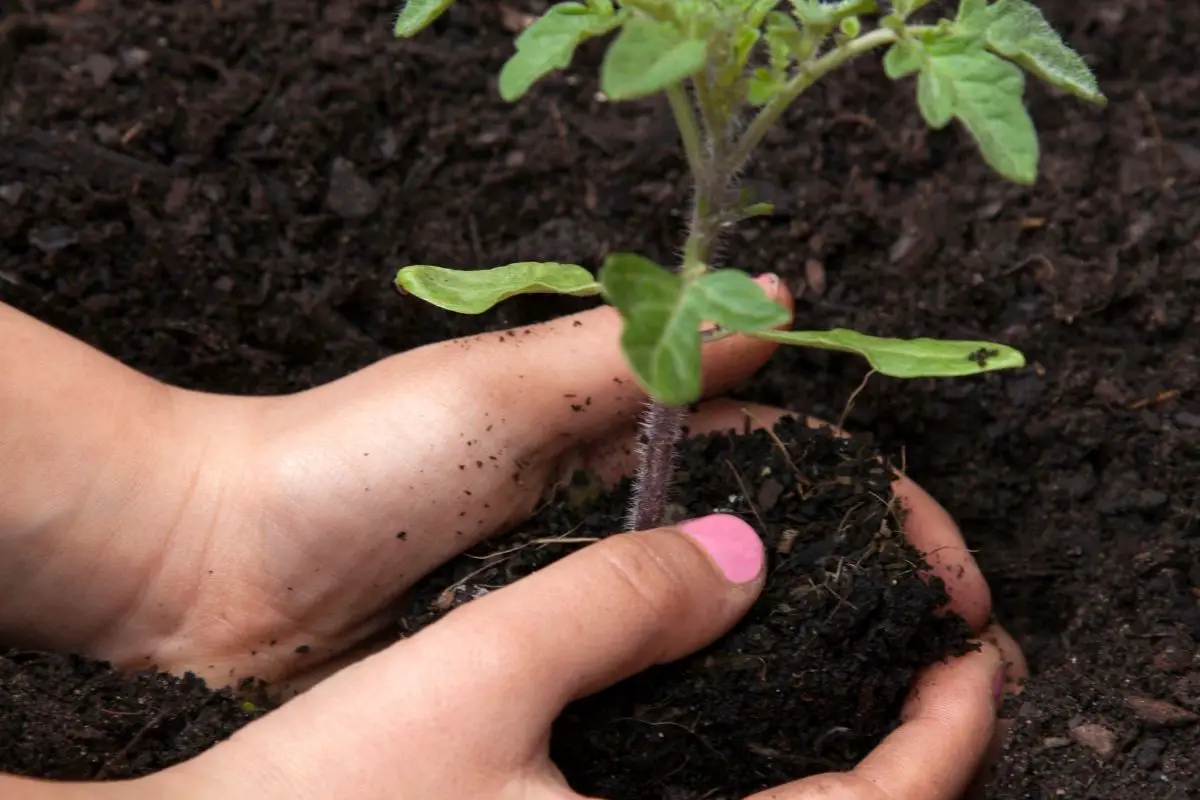
Whether you’re planting in your garden or using containers, you need to plant your tomato seedlings in a hole deep enough to cover the root ball. If you’re planting them directly from peat pots, cover the pot so none of it is exposed above the surface. Your plant will become stronger if you remove the bottom set of leaves and cover the exposed stem with soil.
This helps the plant develop more of a root system for providing water and nutrition.
How to Avoid Tomato Root Troubles?
Tomato roots can suffer from several problems, which usually spring from poor soil and drainage, and insect damage. Here are common tomato root diseases to look for if your tomatoes aren’t thriving:
- Corky Root
- Fusarium Crown Rot
- Southern Bacterial Wilt
- Damping Off
- Root Knot
- Phytophthora
Most of these tomato root diseases are preventable. As long as you provide well-drained soil with a pH of 6.2 to 6.8 and full sun most of the day, your tomatoes should do well. You can apply fertilizer to your soil, but make sure it’s made for your method of planting.
Deep, Healthy Tomato Roots Are Key to Juicy Homegrown Tomatoes
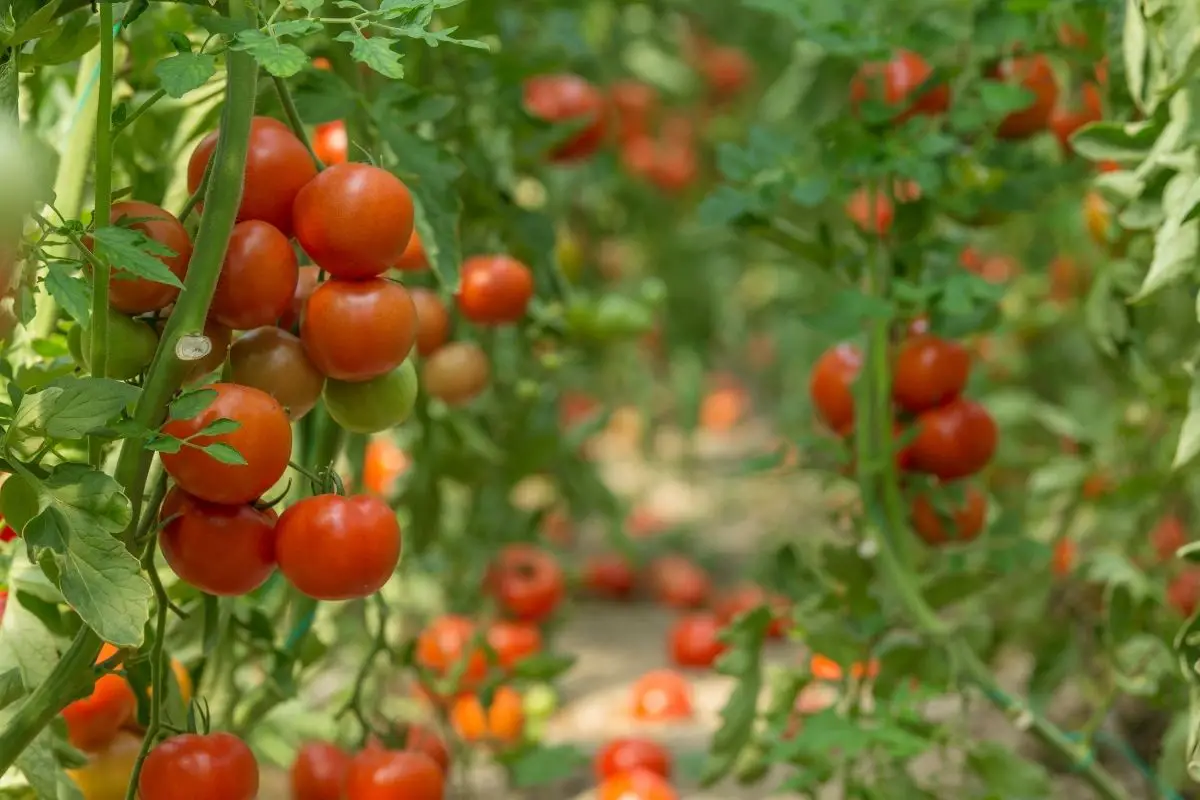
”Only two things that money can’t buy and that’s true love and homegrown tomatoes.” (John Denver, ”Homegrown Tomatoes.”) As long as your tomato root system is healthy, whether it’s taproot or fibrous, you can have delicious homegrown tomatoes. Just plant your tomatoes at the right time, depth, and soil conditions to boost healthy roots and prevent root diseases.
